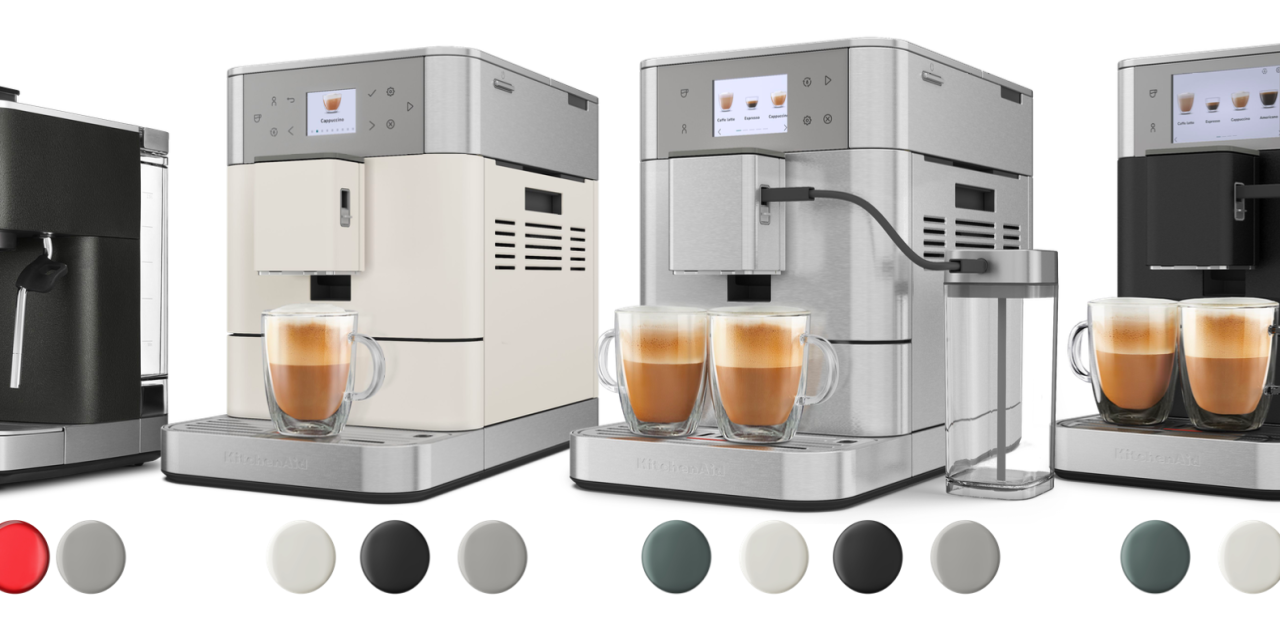KitchenAid plans to take on Starbucks with at-home automatic espresso machines

KitchenAid’s next big foray is into the world of at-home espresso.
The brand, owned by Whirlpool and best known for its stand mixers, has big plans to introduce an all-in-one automatic espresso machine in the hopes of expanding its presence in the coffee space.
At-home coffee, said Ludo Beaufils, evp at KitchenAid small appliances, is a “growth area on the back of increased penetration.” Major regions like around the world — including Europe, Australia and the U.S. — are seeing growth in at-home coffee making, but Beaufils believes the market is only going to continue to grow.
The new products represent an important shift in KitchenAid’s small appliance strategy. Over the last few years, the company has launched more manual espresso machines, with the hopes of attracting more serious drinkers of the beverage. But now, it believes a more expensive yet automated rig will help bring in more growth.
“People are spending more time at home,” Beaufils said. “You really don’t want to have to go to Starbucks to get your espresso.”
With this as a strategic backdrop, the new devices aim to automate as much of the espresso-making process as possible. Users press a button, and the machine grinds the beans, brews the coffee and then automatically steams the milk to make the desired drink. The products will be priced between $1,199 and $1,999, according to Beaufils.
This business update is being presented today at Whirlpool’s investor day. At the event, Whirlpool will lay out some major growth ambitions for its small devices. This includes not only new at-home espresso products, but an increased focus on cordless handheld appliances. KitchenAid launched these last fall, which included a mixer, small food processor and immersion blender, among other items. More details about its direct-to-consumer sales focus will also be unveiled.
In the presentation, the company announced that its small appliances unit — which consists of countertop consumer products like mixers, toasters, blenders and other common non-industrial products — brought in about $1 billion in net sales in 2023. But, that represents a decline from 2021, when small appliance net sales peaked at $1.3 billion annually. Now, the company is hoping new product launches can help close this gap. As a whole, Whirlpool reported $19.5 billion in net sales for the fiscal year, with its cooking appliances representing 26% of net sales.
According to the investor day presentation, the coffee opportunity has the ability to eclipse stand mixers. The global market for mixers, per the document, stands at $3 billion, compared to espresso machines, which represents a potential market of $4 billion.
KitchenAid is by no means an unknown brand — but it isn’t necessarily considered a coffee company. As Beaufils sees it, the hope is that the ease associated with the stand mixers will help establish KitchenAid’s reputation as an espresso-making brand.
“What we looked at was this intimidation,” he said. “The approachability of the category was what struck us… [making espresso at home] is a little bit difficult for people to get through.”
Still, it may be a difficult category to conquer. Already, there are many automatic at-home espresso makers from brands more people associate with coffee. Leading automatic espresso machine companies like De’Longhi and Gaggia make at-home rigs, some as cheap as $600.
According to David MacGregor, president and senior analyst at Longbow Research, while this espresso product launch represents a very niche part of the coffee industry, it could open up more growth opportunities. “Historically, [KitchenAid] has been a much more mass-market, mainstream portfolio of brands,” he said. “There is an opportunity to expand the percentage of the KitchenAid portfolio that’s in those luxury markets.”
As he sees it, this could begin establishing the brand as a more higher-end appliance name. “This could be the first in what could ultimately be a sequence of premium products,” MacGregor said. Still, automated espresso, he said, “is a very small segment.” But, he went on, “There’s no reason why there isn’t an opportunity in premium kitchen appliances.”
The hurdle, however, is whether or not KitchenAid can transcend its status as mid-tier stand mixer. “The question is: Is the KitchenAid brand credible enough to provide a platform for that [more premium] business?” MacGregor said.
According to Beaufils, recent growth in the DTC business shows that more people are seeking out KitchenAid products directly.
“We drew a lot of traffic to Kitchenaid.com [during the pandemic],” he said. “We’re continuing to grow beyond that point [and] we’ve got plans to build it further… it’s a fantastic place for us to build our brand.”
Beaufils is also confident that the KitchenAid brand will soon become a household coffee name. “This is one of those brands that people tattoo on their forearms,” he said. “It’s a loved brand that consumers are proud to own, proud to gift — I have confidence that if we are good custodians of that [KitchenAid] brand we can take it very far and build a great business.”
